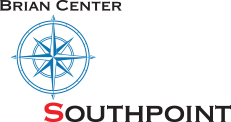According to the Center for Disease Control and Prevention, more than 1.7 million people suffer traumatic brain injuries (TBI) each year. The Brain Injury Association of America also notes that an additional 915,000 deal with acquired brain injuries (ABI) from events such as strokes and tumors every year. For these people suffering, achieving a high quality of life can be a significant challenge. Brain injuries can affect cognitive, physical, behavior and psychosocial functioning, and put considerable stress on families.
Rehabilitation professionals are currently finding success with neurologic music therapy (NMT), which promotes the rehabilitation of speech and motor abilities through instrument play, singing and movement to music. Although it has been around for decades, the treatment rose to the public consciousness after it was used to help Representative Gabrielle Giffords recover her speech after a gunshot wound in 2011 that resulted in TBI.
First and Foremost, What is Music Therapy?
Neurologic music therapy is a clinical approach based on research in the neuroscience of music perception and production. When practitioners introduced music therapy decades ago, the scientific community was skeptical. Although people have believed in music’s healing powers since ancient times, music was not considered a viable treatment until scientific and clinical research began to show the brain’s ability to change and its connection to music.
Today, practitioners must receive training in music and NMT to help with the rehabilitation of cognitive, motor, speech and language functions. The most popular method is rhythmic auditory stimulation (RAS), which connects rhythm and movement. NMT practitioners typically begin with a clinical assessment to identify the patient’s therapeutic goals, which they will transfer into everyday life. The therapist chooses functional therapeutic music exercises that target those goals.
Music Therapy Exercises
Therapeutic music exercises vary depending on the target goals. Here are some examples of the skills that NMT targets:
-
Increased speech and communication: Patients who are unable to talk but do have the ability to sing benefit from singing and music improvisation. Singing also helps with verbal communication skills such as breath control and speech timing. In addition, singing and music improvisation provide an outlet for the expression of feelings experienced by these patients, many of whom experience depression.
-
Regaining movement and muscle control: Patients lacking range of motion and muscle control spend many hours stretching and strengthening muscles. NMT practitioners find that playing music motivates patients to extend their physiotherapy times. Other techniques include:
-
Exercising to upbeat music
-
Exercising mouth muscles
-
Drum playing to increase arm movement
-
-
Promoting cognition: Rhyming, chanting, or rapping can be helpful for developing sequencing skills while listening to music improves concentration. Studies have shown patients who are easily distracted can focus on a song for as many as several minutes. Songwriting is another tool used to help with distraction. Many therapists promote cognition by setting phrases to music, and assisting patients in creating songs with lyrics that contain important information.
Studies on the Effectiveness of Music Therapy
There have been numerous studies on the effectiveness of music therapy on TBI and ABI from a stroke. In 2010, Dr. Joke Brandt and her research team reviewed seven studies at Temple University’s Arts and Quality of Life Research Center in Philadelphia, PA. Dr. Brandt’s Cochrane Systematic Review of music in recovery from brain injury examined seven controlled studies that compared music therapy against standard care.
Three of the studies focused on Rhythmic Auditory Stimulation therapy. Compared to standard movement theory, RAS was responsible for a walking speed increase of approximately 14 meters per minute in stroke patients. Dr. Brandt is hopeful about the potential of proving the same results with patients who have neurological damage.
The results of the review were encouraging, but according to the study, more work is needed. It concludes, “Research efforts need to focus on conducting music therapy trials with high-quality designs, as well as including the effects on mood and emotions, social skills and interactions, and activities of daily living.”
The medical community is apparently positive about the success of NMT as, several of the top rehab hospitals in the U.S. for people with stroke or brain injuries are incorporating NMT!
Our Full-Service Rehab Facility
Patients recovering from strokes or brain injuries can benefit from a rehabilitation facility that offers advanced treatments in a warm and caring environment. Brian Center Southpoint is a full-service rehabilitation facility that provides state-of-the-art physical therapy, speech therapy, and occupational therapy with an experienced and caring staff. Our therapists can treat those who have had a decline in:
-
speech clarity
-
communication or language
-
cognition
-
facial expression
-
dysphagia (difficulty swallowing)
Learn more about our services and how they can help you or a loved one heal today.
